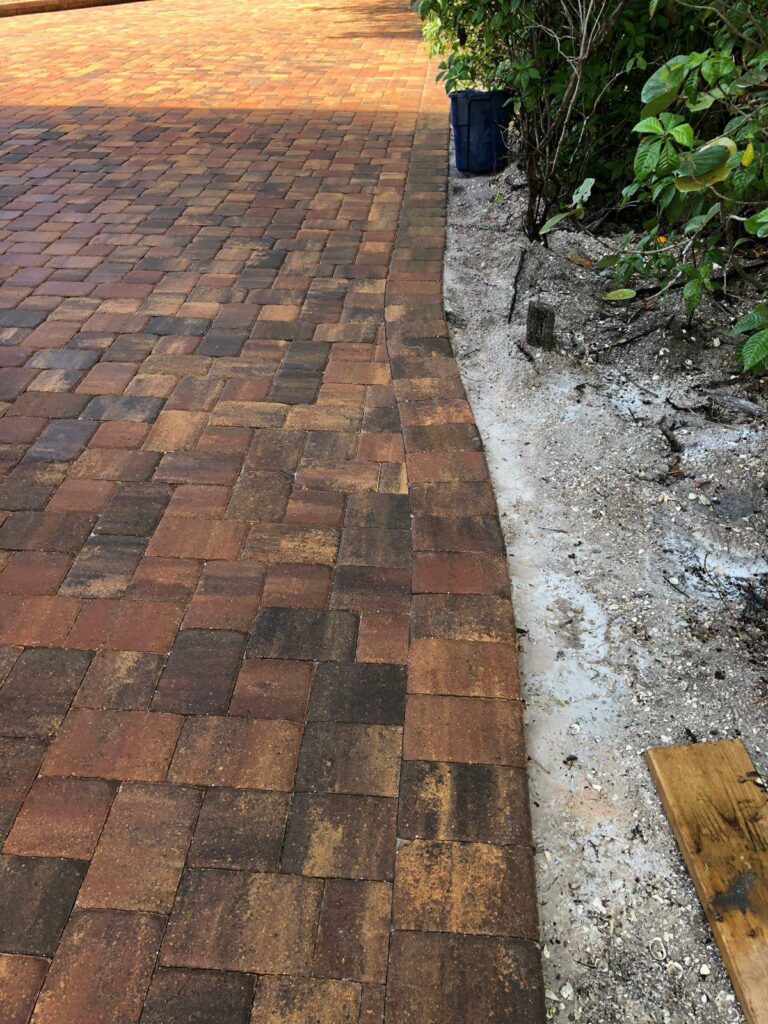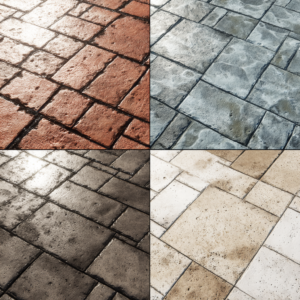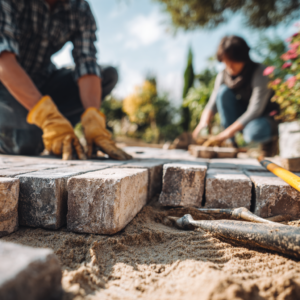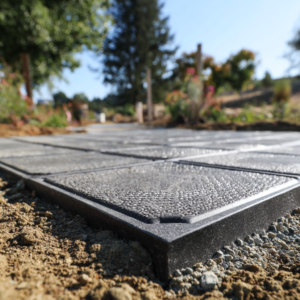Installing pavers seems pretty simple, you lay down bricks on your yard, put some furniture over it, and all done, you have a brand-new patio to gather with friends and family! It’s as easy as solving a puzzle, right? Well, not so much.
While a paved surface can be a nice and “fast” addition to your house, installing one it’s not easy at all, it requires planning, a lot of work, and attention to the details. If the installation is not done properly, with time the pavers are going to move, sink and shift.
Fortunately, there are a few things you can do to keep pavers from shifting. Find out more about it in this article!
Jump to:
How to keep pavers from shifting?
The main reason that can cause shifting on pavers is not doing the edging properly.
Edging is mandatory for any paver installation. If you don’t do it, your pavers are more likely to spread and sink over time, but it can also cause other problems, like weed and moss growth between them.
If your pavers aren’t installed with the edges touching another solid surface, like a wall, curb, or driveway, you must edge the whole perimeter of your project.
Now that you know how much edging is necessary, it’s time to explain how to do it properly:
- Installing edge restrains: Edge restraints can help a lot to hold the shape of your project over the years. They are usually made of plastic, aluminum, or steel and you can place them along the perimeter of the project.
- Choosing the edging type: There are 2 types of edging available: rigid or flexible. Which one you should choose to depend on the shape of your project, while straight edges work better with the rigid option, projects with round shapes require flexible edging.
- Securing the edging with spikes: Most edges need to be secured into the ground to prevent shifting and all the spikes need to be placed 8 to 10 inches apart.
- Locking the pavers in place: For security (and design reasons), all the spikes need to be completely buried into the ground.
- Covering the edges: Once the installation is complete, you can cover the edges with mulch or loamy soil.

Benefits from a proper edge installation
It protects your investment
Edging pavers properly keeps the surface and all the stones in place for many years to come. This is especially important for driveways, once the surface needs to hold the weight of cars passing over it.
It prevents weed and moss growth
Weed and moss not only ruin the paver’s appearance but also present a safety risk, especially moss for being slippery when it’s wet. Since most types of edging are set several inches into the ground, it can also effectively make weed and moss stay away from your pavers.
Protects your lawn
Just like your pavers, a nice lawn can boost your curb appeal, so you must protect your investment. Proper edging creates a visual barrier, once people will be less likely to step across it and not ruin your lawn.
It prevents soil erosion
Most people think that soil erosion is unlikely to happen, but actually it can occur more easily than you think, edging is important to keep everything where it belongs. It prevents your lawn from washing or blowing away.
Less maintenance
Every homeowner’s dream is to have a low-maintenance paver patio, driveway, or walkway. Edging can be very helpful by reducing the amount of work and hours you’re gonna spend just to keep everything in place.
Can I edge pavers by myself?
You can, but keep in mind that DIY projects tend to go wrong. As you could see through this article, there are too many details to pay attention to while installing and edging pavers that make doing all the work on your own not worth it.
If you have no idea how to install pavers properly, you can have a professional contractor plan and install it for you in a couple of days. If you’re worried about the cost, you can also get a free estimate for your project!
JS Brick has been providing Sarasota with Bricks and Pavers installation, supply, and maintenance services since 2000. Our commitment to quality products, exceptional services, and incomparable customer care has been a trademark ever since.



